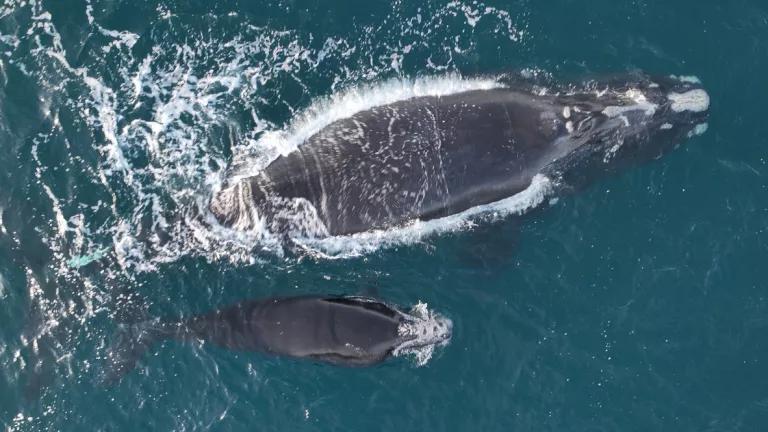Today marks an important day for sharks off our Atlantic coast and in the Gulf of Mexico. Responding to a petition filed by NRDC in February, the National Marine Fisheries Service (NMFS) and National Oceanic and Atmospheric Association (NOAA) today published their determination that they will conduct a scientific study to determine whether the Northwest Atlantic and Gulf of Mexico population of dusky shark should be listed as a “threatened” species under the Endangered Species Act. This is a step in the right direction, getting us closer to ensuring a healthy and safe future for these mighty creatures.
Reaching an average size of 12 feet long and 400 pounds at maturity, the dusky shark, like all sharks, plays a critical role in maintaining the long-term health of our coastal marine ecosystems. Migrating up and down the northwest Atlantic with the seasons, this apex predator helps keep other species in check, providing balance in the marine food web. The dusky shark lives for 40 years or more, but only reaches reproductive maturity after 20 years, making it one of the slowest maturing species of shark. Because of this late maturation and its slow growth rate, scientists have identified the dusky shark as highly vulnerable to population collapse.
The dusky shark has been subject to escalating fishing pressure for much of the last several decades. Due to overfishing and bycatch – when sharks are caught by fishermen targeting other species, like tuna or swordfish – the Northwest Atlantic dusky shark population has dropped to an estimated 15 to 20 percent of the level it was at in the 1970s.
Fishing and other ongoing threats is why NRDC submitted its Endangered Species Act petition in February for the dusky shark, following up on a November petition by WildEarth Guardians. With its positive finding, NMFS and NOAA determined that these petitions provided enough scientific basis to warrant further review. Over the next twelve months, the federal agencies will conduct a full scientific study of the dusky shark’s status, concluding with a decision whether to formally propose that it be listed under the Endangered Species Act.
Although listing is not guaranteed, this is an important step for the dusky shark. Now it’s up to all of us who care about the future of the dusky shark us to keep the momentum going forward. You can submit comments to the NMFS on the possible listing until July 16, 2013. Enter your comments, identified with the code NOAA-NMFS-2013-0045, online here: www.regulations.gov/#!docketDetail;D=NOAA-NMFS-2013-0045. Or you can mail them (identified by the code NOAA-NMFS-2013-0045) to the following address: Office of Protected Resources, NMFS, 1315 East-West Highway, Silver Spring, MD 20910.
As our government weighs a decision critical to the long-term survival of the dusky shark, we encourage you to take action to save this majestic species.




